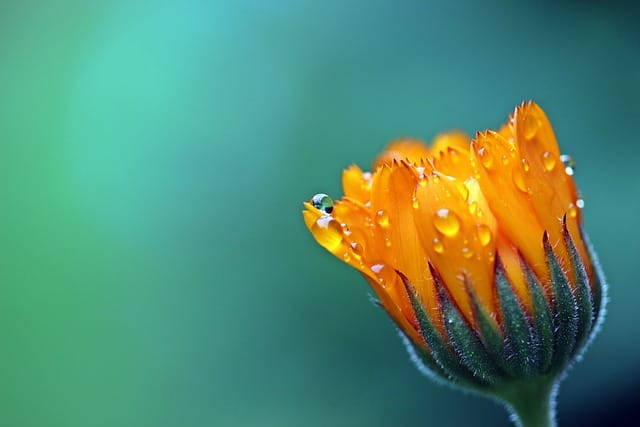How to grow Calendulas
The Calendula, also known as the Marigold, is a beautiful flowering plant that is popular for its vibrant colors and medicinal properties

In this article:
- Introduction to Calendulas
- Choosing the Right Calendulas Variety
- Selecting and Preparing the Planting Site
- Propagation Methods: From Seeds to Seedlings
- Planting Calendulas: Step-by-Step Guide
- Proper Watering and Moisture Control
- Feeding and Fertilizing Calendulas
- Controlling Pests and Diseases
- Pruning and Deadheading Techniques
- Extending the Blooming Season
- Harvesting and Preserving Calendulas
- Utilizing Calendulas in Floral Arrangements
- Creative Ways to Use Calendulas in the Garden
- Frequently Asked Questions about Growing Calendulas
- Conclusion: Enjoy the Vibrant Beauty of Calendulas in Your Garden
Introduction to Calendulas
The Calendula, also known as the Marigold, is a beautiful flowering plant that is popular for its vibrant colors and medicinal properties. It is easy to grow and can add a touch of cheerfulness to any garden. This article will provide you with all the information you need to successfully grow and care for Calendulas in your garden.
Choosing the Right Calendulas Variety
When selecting a Calendulas variety, consider the desired height, color, and flower size. Common varieties include Calendula officinalis, which has bright yellow or orange flowers, and Calendula Pacific Beauty, which offers a mix of colors like apricot, cream, and orange.
Selecting and Preparing the Planting Site
Calendulas thrive in full sun but can tolerate partial shade. Choose a well-draining soil with a pH between 6 and 7. Amend the soil with organic matter, such as compost, to improve fertility and drainage.
Propagation Methods: From Seeds to Seedlings
Calendulas are typically grown from seeds. Start by sowing the seeds indoors or directly in the garden in early spring. Follow the instructions on the seed packet for proper planting depth and spacing. Seeds usually germinate within 7 to 14 days.
Planting Calendulas: Step-by-Step Guide
Prepare the planting site by removing any weeds or debris. Dig small holes or furrows, depending on the planting method you choose. Place the seedlings or seeds in the holes or furrows and cover them with soil. Lightly water the area to promote establishment.
Proper Watering and Moisture Control
Calendulas require regular watering to thrive. Water deeply but avoid over-watering, as it can cause root rot. Check the moisture level of the soil regularly and adjust watering accordingly. Apply mulch around the plants to retain moisture and prevent weed growth.
Feeding and Fertilizing Calendulas
Feed Calendula plants with a balanced, water-soluble fertilizer every 2 to 3 weeks during the growing season. Follow the manufacturer's instructions for the correct dosage. Avoid over-fertilization, as it can lead to excessive foliage growth and reduced blooming.
Controlling Pests and Diseases
Calendulas are generally resistant to pests and diseases. However, they can sometimes be affected by aphids, slugs, or powdery mildew. Monitor your plants regularly and take appropriate measures if you notice any pest or disease infestation, such as using organic insecticides or removing affected leaves.
Pruning and Deadheading Techniques
To encourage continuous blooming, deadhead Calendula flowers regularly. Remove faded flowers by cutting the stem just above a leaf node or bud. This will divert the plant's energy into producing new blooms. Prune any leggy or damaged growth to maintain a compact and healthy plant.
Extending the Blooming Season
To extend the blooming season, plant Calendulas in successive batches, staggering the sowing or transplanting by a few weeks. This will ensure a continuous supply of fresh blooms throughout the season. Regularly fertilize and water the plants to keep them healthy and blooming.
Harvesting and Preserving Calendulas
Harvest Calendula flowers when they are fully open in the morning. Cut the stems just above a leaf node and remove any foliage. Dry the flowers in a well-ventilated area away from direct sunlight. Once dried, store them in airtight containers for future use in teas, salves, or culinary adventures.
Utilizing Calendulas in Floral Arrangements
Calendulas make beautiful additions to floral arrangements. Combine them with other seasonal flowers or greenery to create striking bouquets. Their vibrant colors and unique shape can add a cheerful touch to any floral display.
Creative Ways to Use Calendulas in the Garden
Aside from their visual appeal, Calendulas also have practical uses in the garden. Plant them as companion plants to deter pests, or use their petals to make natural dyes for fabrics or homemade potpourri. Their versatile nature allows for endless creative possibilities.
Frequently Asked Questions about Growing Calendulas
Q: How often should I water my Calendulas?
A: Water your Calendulas deeply once or twice a week, depending on the weather conditions and soil moisture levels.
Q: Can I grow Calendulas in containers?
A: Yes, Calendulas can be grown successfully in containers. Choose a well-draining potting mix and provide regular watering and fertilization.
Q: How long do Calendulas bloom?
A: Calendula blooms typically last for several weeks to a few months. With proper care, you can extend their blooming period and enjoy their beauty for longer.
Conclusion: Enjoy the Vibrant Beauty of Calendulas in Your Garden
By following the guidelines in this article, you can successfully grow and care for Calendulas in your garden. From selecting the right variety to preserving the harvested flowers, you now have the knowledge to create a beautiful and blooming Calendula garden. Enjoy the vibrant beauty and various uses of Calendulas in your outdoor space!
